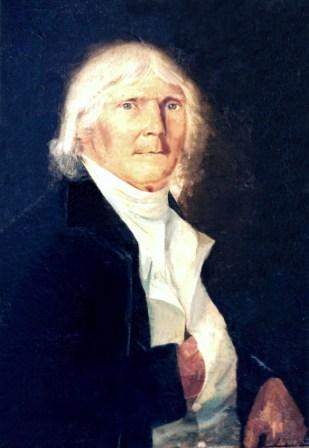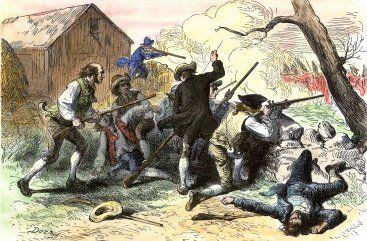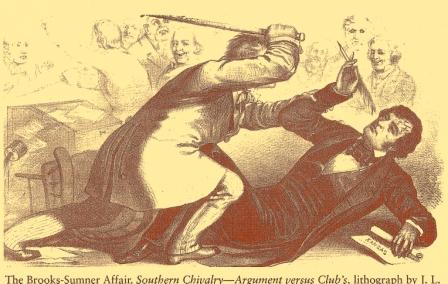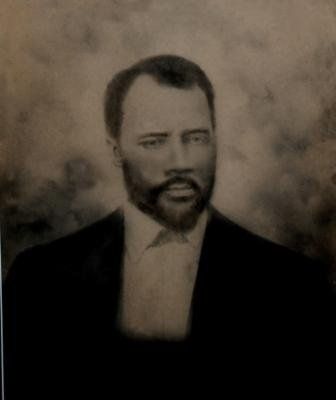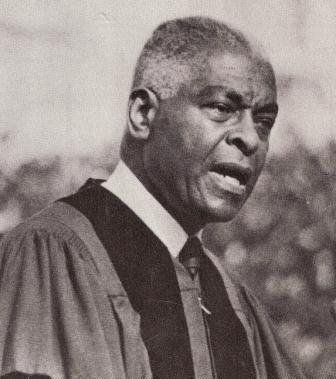Thematic Overview
A THEMATIC OVERVIEW OF EDGEFIELD, SC
Edgefield County
Present-day Edgefield County was first settled in the 1750s, then a portion of a vast unsettled region of virgin forests, abundant wildlife and Indian tribes. From the time of the first settlements through the period of the American Revolution, this area was part of the Old Ninety Six District which included all of the northwestern portion of South Carolina. During most of this period there were no courts, law enforcement or local government.
In 1785, immediately following the Revolution, the state legislature addressed the lack of governmental structure by dividing the Ninety Six District into smaller counties, including Abbeville, Laurens, Newberry and Edgefield, SC. Local courts, law enforcement agencies and governing bodies were established for each of these counties. At that time, Edgefield County was far larger than it is today, encompassing 1,720 square miles.
The seat of government for this broad district was located on an “Old Cherokee Path” which was the approximate geographical center of the district. The “Publick Lot” was identified as early as 1785, and a “gaol” (jail), clerk’s office and courthouse were built during the next several years. However, it was not until 1792 that Arthur Simkins, a prominent settler and political leader, officially conveyed to the “Judges of the Edgefield County Court” the 2¼ acres where the Town Square and Courthouse are now located.
In the last half of the 19th century and early in the 20th century, as citizens demanded more local political control, the counties of Aiken (1871), Saluda (1895), Greenwood (1897) and McCormick (1916) were created, taking substantial parts of Edgefield County. Today Edgefield County encompasses only 481 square miles, roughly one-fourth of its original size.
THE NAME “EDGEFIELD”
The origin of the name “Edgefield” is shrouded in mystery. There are six principal theories as to how the name may have come to be applied to this county and town:
(1) Robert Mills, in his 1826 Statistics of South Carolina, said that the district was so named because it was at the edge of the state.
(2) Others have believed that the name came about because the district line was just beyond the edge of the Revolutionary battlefield at Ninety Six.
(3) There is a tradition that the courthouse site was near the edge of a field where a 1751 battle took place between the Yuchi (Euchee) and Monongahela Indians.
(4) There is also a compelling theory that the courthouse site was at the edge of “Cedarfields,” the plantation of Arthur Simkins, who was intimately involved in the creation of the new county.
(5) It is possible that this district was named for Edgefield, England, a small village in Norfolk, the name of which dates back at least as early as the 12th century.
(6) Some local historians believe that it is more likely that the name is derived from the fact that the courthouse site was near the edge of “Rogers’ Old Field,” where, in 1781, a small band of Patriots routed a much larger company of Tories. As one of the most significant local Revolutionary War victories for the Patriots, this battle may have inspired the name for the new county.
Regardless of its origin, and despite its relative simplicity, the name “Edgefield” is remarkably unusual, with only a few other places in the world sharing this name.
POLITICAL HERITAGE
Beginning early in the 19th century, Edgefield developed a strong tradition of political leadership, contributing ten South Carolina governors, five lieutenant governors and seven United States Senators. Many of these leaders practiced law; others were soldiers and planters.
George McDuffie led the state in the Nullification Movement of the 1820s and 30s, in which South Carolina sought to invoke the power of a State to nullify a federal law with which it disagreed. William Barrett Travis and James Butler Bonham led the fight for Texas Independence at the Alamo. Preston Brooks propelled South Carolina towards secession. Francis Pickens and Milledge Bonham led the state during the War Between the States. Martin Witherspoon Gary and Matthew Calbraith Butler led the 1876 effort to “redeem” the state from radical Republican rule. “Pitchfork” Ben Tillman led South Carolina’s farmers in the 1890 campaign to wrest control of the state from the ineffective “Bourbon” leaders.
In the 20th century, Strom Thurmond established a remarkable record of courageous leadership, spanning an extraordinary period of over three quarters of a century. Educators Benjamin Mays and Charles Gomillion provided key leadership in the civil rights movement.
William Watts Ball, an eminent South Carolina journalist and historian, wrote: “Edgefield has had more dashing, brilliant, romantic figures, statesmen, orators, soldiers, adventurers, and daredevils, than any other county of South Carolina, if not of any rural county of America.”
A HISTORY OF VIOLENCE
From its earliest history, Edgefield, SC developed a reputation for violence. The bloody fighting of the Cherokee War of 1760 was followed by years of lawlessness and retribution during the Regulator period. During the American Revolution this same extreme violence was continued with Patriots and Tories engaged in a vicious and bitter civil war.
In 1816, an itinerant minister, Parson Mason Locke Weems, who had lived in Edgefield, published “The Devil In Petticoats,” a dramatic sermon chronicling the deeds of the legendary murderess Becky Cotton. He lamented, “Will the Lord have mercy upon Old Edgefield! For sure it must be pandemonium itself, a very District of Devils!”
In the antebellum period, many Edgefield men were participants in the tradition of dueling. Among the famous Edgefieldians who dueled were George McDuffie and Louis T. Wigfall. In 1856 Congressman Preston S. Brooks caned Senator Charles Sumner of Massachusetts on the floor of the U.S. Senate. The 1878 Booth-Toney shootout, the 1903 shooting of newspaper editor N.G. Gonzales by Lt. Governor James H. Tillman and the 1941 Timmerman-Logue affair, all garnered national publicity, perpetuating Edgefield’s reputation for violence.
Over the years, violence in Edgefield was decried with alarming frequency in its newspapers. It has been said that blood has been shed on every square foot in the Town Square. By the end of the 20th century a number of eminent historians, journalists and novelists had written extensively about Edgefield’s violent past.
AGRICULTURAL HISTORY
In the 18th century, Edgefield County had largely a subsistence economy in which the settlers consumed what they raised. Beginning around 1800, following the invention of the cotton gin, planters began to grow cotton, which became an extremely profitable cash crop. During the antebellum period, “King Cotton” created a plantation society based upon slave labor. The wealthiest planters erected imposing homes both on their plantations and in the Village of Edgefield.
After the War Between the States, cotton production continued to increase sharply until the early 1920s. Edgefield County, like most of the South, became a “one-crop” economy, in which all of life revolved around the cultivation of cotton.
In the early 1920s, the boll weevil arrived in Edgefield County, devastating cotton yields. This tiny insect triggered an extended decline in cotton production, causing a dramatic outmigration from the county’s farms and depressing the local economy for nearly half a century.
Although peaches have been grown in Edgefield County since the 18th century, the first commercial crop was produced by William Gregg in the 1850s. With the decline of cotton in the 1930s, a number of farmers on “The Ridge” began to cultivate peaches on a commercial scale. By the late 1960s Edgefield County’s peach production had become nationally significant.
Forestry has always been an important part of the county’s economy. In the period after the decline of cotton, hundreds of thousands of acres in Edgefield County returned to woodlands, much of it for the commercial production of pine trees for the wood products and paper industry.
INDUSTRIAL HISTORY
Beginning in 1809, Dr. Abner Landrum developed Edgefield’s first major industry, stoneware made from local clay. The most famous potter in Edgefield’s history was a literate African-American slave named “Dave” whose pots, occasionally being inscribed with poems, are highly prized by collectors and museums today.
In the 1820s, Henry Schultz, a native of Hamburg, Germany, built the market town of Hamburg on the Savannah River across from Augusta. A decade later the world’s longest railroad was constructed, linking Hamburg to Charleston. Unfortunately, further railroad extensions in Edgefield County were delayed for many decades, with the railroad not reaching the Town of Edgefield until 1888.
The first textile manufacturing operation in the Edgefield District was started by another enterprising German immigrant, Christian Breithaupt, who built a mill in 1828 on Horse Creek at Vaucluse. In 1845 William Gregg chartered the Graniteville Company, which became the most productive textile mill in the antebellum South.
Daniel Augustus Tompkins, a remarkable engineer, businessman and industrial prophet, was an Edgefield son who had a great impact on the industrialization of the entire South. He was the father of the cottonseed oil industry and also designed and built over 200 textile mills throughout the South, including the 1896 Edgefield mill.
In the decades following World War II, a number of national companies built manufacturing plants in the county. Today, Edgefield County’s economy is broadly diversified, with the agricultural, manufacturing and service sectors each providing approximately equal measures of economic activity.
RELIGION & EDUCATION
Religion has played an important part in the lives of the people of Edgefield County. In the 1760s, the great Separatist Baptist evangelist, Daniel Marshall, came to this area and established Big Stevens Creek and Horn’s Creek Churches. In 1826 Edgefield Baptists, together with others from around the state, established Furman Academy and Theological Institution, the forerunner of Furman University and the Southern Baptist Theological Seminary. The Edgefield church later came under the leadership of the Rev. William Bullein Johnson, who became the founder and first president of the Southern Baptist Convention. Other denominations, including Methodists, Episcopalians and Catholics, were established here in the antebellum period.
After the War Between the States, a remarkable former slave, Rev. Alexander Bettis, provided inspiring leadership for the freedmen and established over forty churches throughout Edgefield and Aiken Counties. These churches were organized into the Mount Canaan Association and, with their combined resources, Bettis Academy, a school for the African-American youth of the region, was established in 1881. Another prominent African-American educator from Edgefield County was Dr. Benjamin Mays, the president of Morehouse College in Atlanta and a mentor of the Rev. Martin Luther King, Jr.
From early in the 19th century and throughout the antebellum period, Edgefield County was noted for its superior schools, including the Edgefield Village Academy, the Blocker Academy and the Edgefield Female Academy. Later, from 1898 to 1913, the South Carolina Co-Educational Institute, located in the Town of Edgefield, was recognized throughout the Southeast for its academic excellence.


